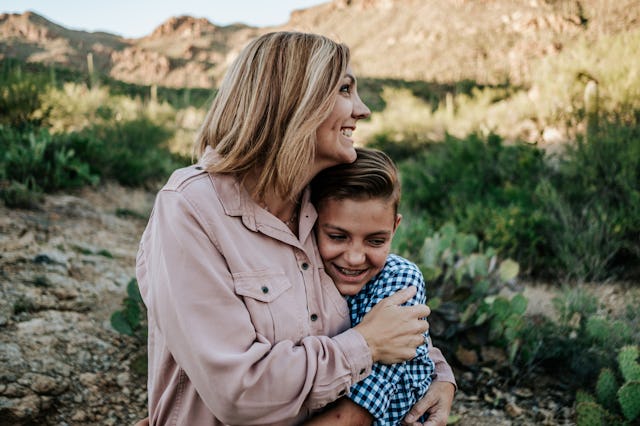What To Do When Your Non-Binary Child Wants To Change Their Name
Parents play a pivotal role in helping a child change their name to best fit their identity. Here’s where you might start if your child asks to be called something new.

You likely took a lot of care when choosing your child’s name, so it can be a jolt when they ask to change it. And yet, name is identity, and your child’s identity is all their own, which is why it’s important to be supportive if your child wants to change their name.
Nonbinary children often want a gender fluid name that can match any gender, or they want a new name that speaks to the growth they’re feeling internally. Now that my own kids are older teens, we’ve seen many families help kids through a name change. I’ll go ahead and state the obvious first: It’s going to be most important that you, their parent, call them by the new name at home. Home should be a safe place where they can be most themselves, so you getting it right (with practice, naturally) is step one.
Expect plenty of slip-ups when a child wants to change their name. Most people say it’s best if you stop apologizing for sometimes saying the former name — just correct yourself and move on. Sharing the new name with relatives and close friends will help cement it in your head, as will using it in texts and practicing it out loud with your partner.
Step two will be to ask the school to use your child’s preferred name. Start with the teacher and ask that the new name be used in class. I have to admit that when I saw Charlotte meet with her nonbinary kid’s school in the Sex in the City reboot, And Just Like That, it rang true for my New Yorker self: Schools around me seem incredibly supportive of children’s identity expressions and can often be ahead of the parents. In other districts it might take some work to get the importance of the name change across, especially for a nonbinary name change.
In the meantime, your child’s friends will probably start using the new name without much prompting. Kids so often accept a change and run with it.
Lastly comes changing your child’s name legally. Having seen friends go through it, let me warn: Don’t underestimate what a pain in the butt it is to legally change your child’s name. OMG, have you every tried to change your name after marriage? Changing a child’s name takes more time, more paperwork, and possibly more money than that does. And if you share custody of your kid, you’re going to need an extra dose of cooperation. Start by looking up the rules in your state. (Here is the overview in New York, the process in California, and a PDF explaining the process in Florida.) To be perfectly frank: It will be simpler for your child to change their own name when they are an adult.
I witnessed one friend legally change her child’s name in middle school, only to have the child request a different name by high school. So I look to two other friends as more successful stories: They each helped their child through the legal hurdles after the kid turned 18. Until then, they were admirable advocates, and helped make sure everyone in their child’s life used the preferred name.
Being your child’s advocate really is the most important part. It’s entirely possible that there will be blowback from grandparents or other relatives, which you can handle in private conversation. Refusal from the school to make the change will require pressure and persistence on your part. Here’s a guide from the ACLU if you need some legal ammunition on your side for a school meeting. Remember, you have more power than you might think when it comes to being the voice for your kid. Plus, insisting that people use their chosen name isn’t asking for a favor, it’s requesting simple humanity.